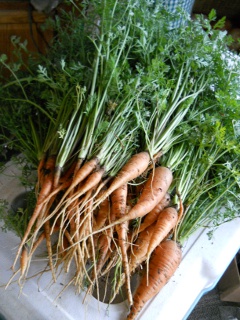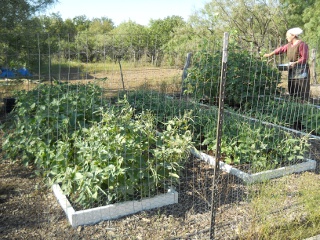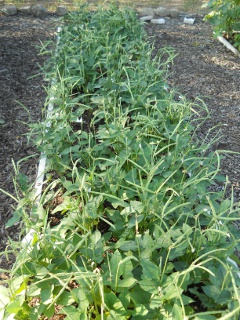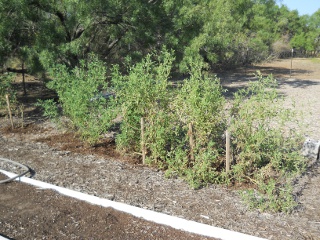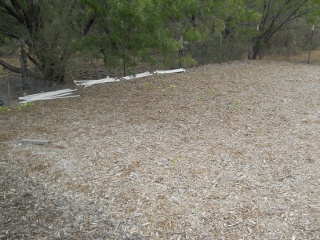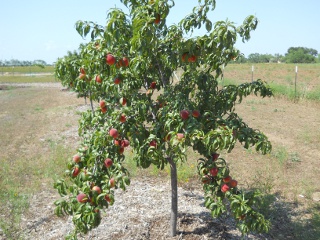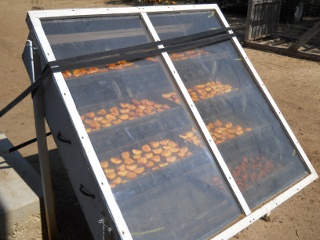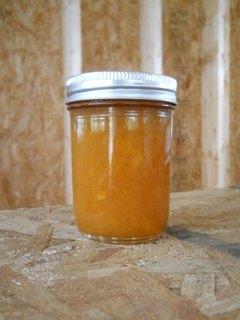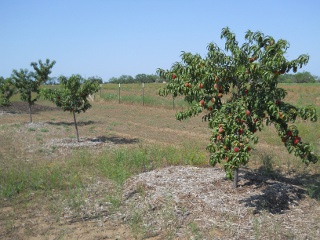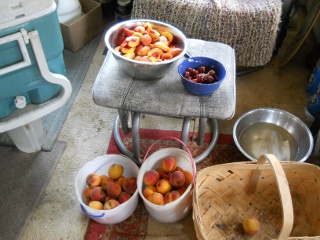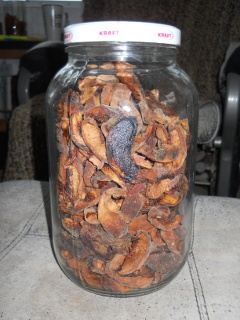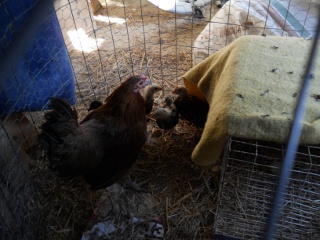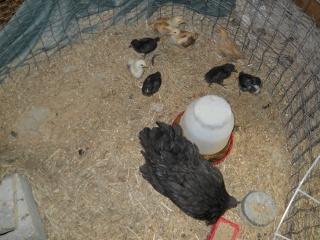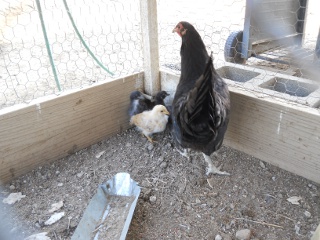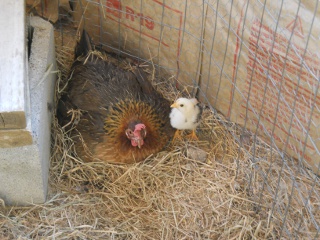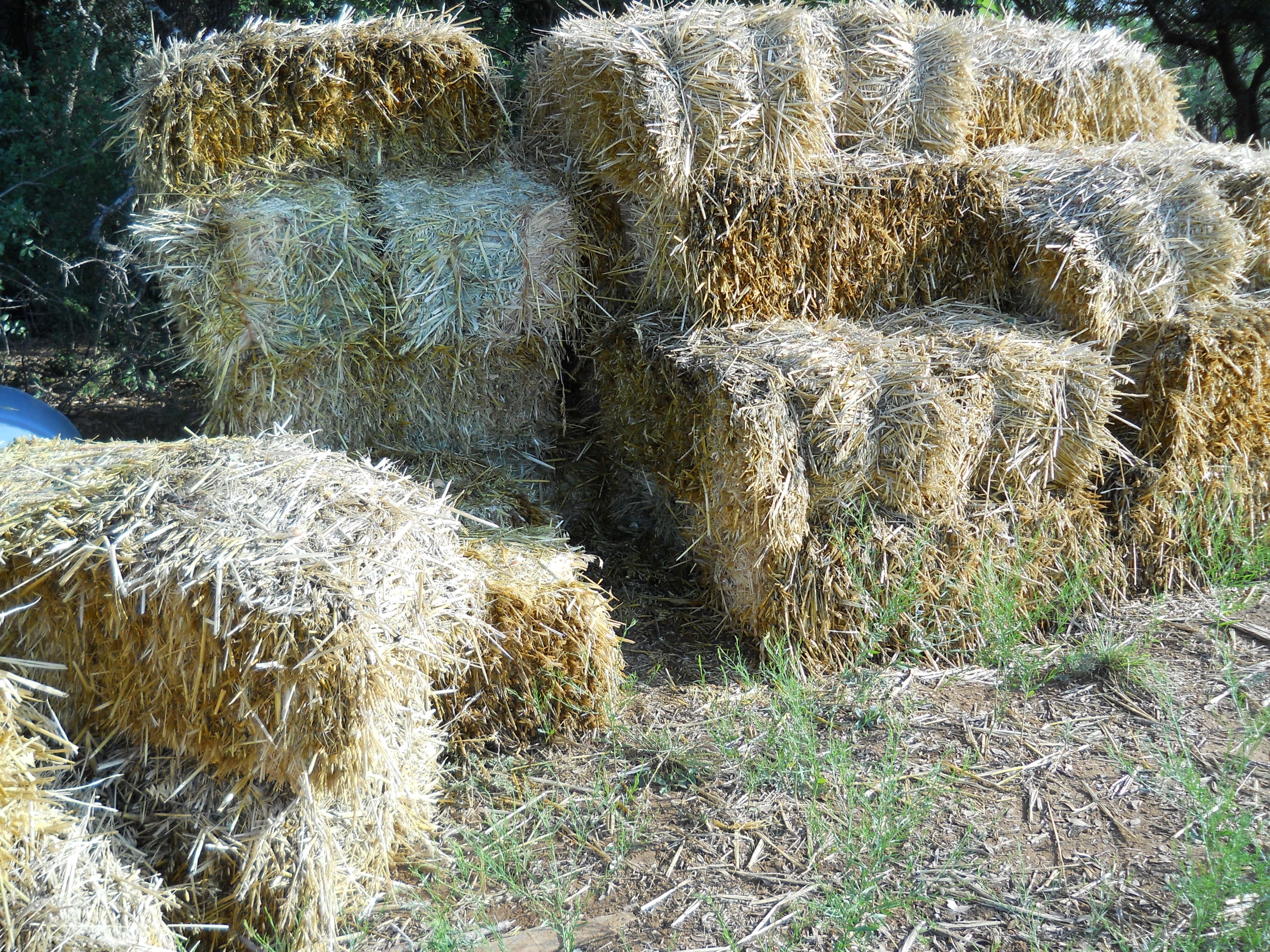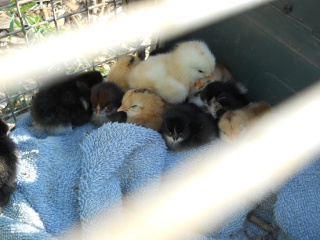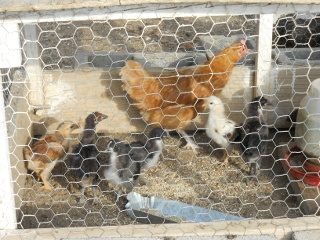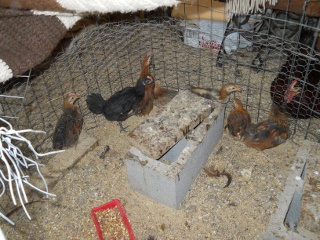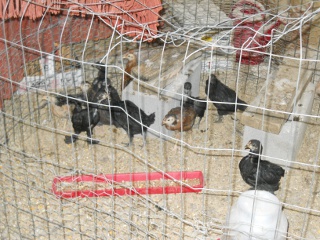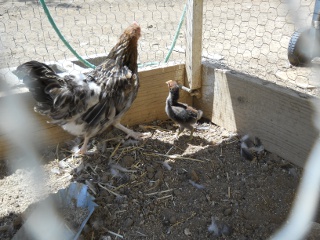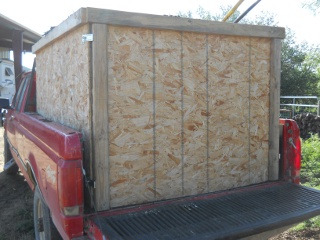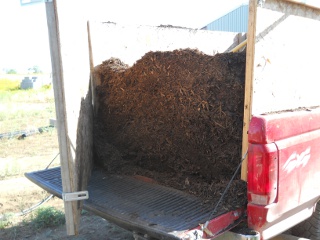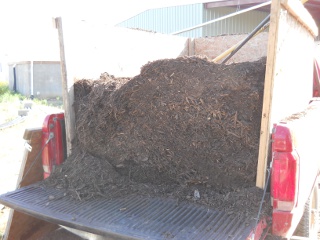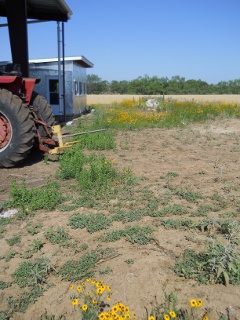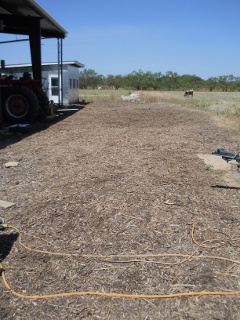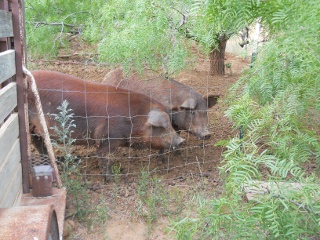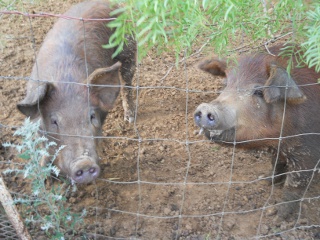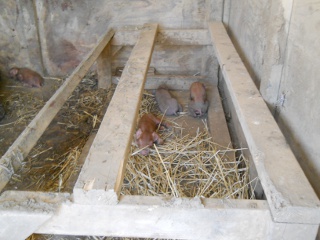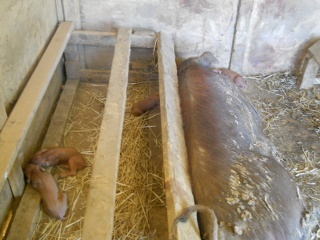Around 10 years ago and a couple of months, Sue and I were attending a post-modern, seeker-sensitive church; and we were both heavily involved. I was at a place in life where to me things weren’t as they seemed. I had been recently then reading a site that talked about secret societies and how the elite rules the world from behind the scenes. As part of that, I was curious as to where we were technology-wise toward things like what I thought would be “the mark of the beast” (which I thought at the time might be chip implants, etc.), and so from that web site I bought some technology tapes which were talks from a fellow named Michael. I watched the videos, which were quite interesting. On the videos were printed his web site, but for some reason during those couple of months, I never visited the site, even though I did web application development for a living.
Well, one day, in August, 2002, I thought, hey, I should check out this guy’s web site. Looking back, I find it interesting that there was a delay in visiting his site, but now I figure that it just wasn’t time in God’s plan for me to find what I was going to find there…
I started reading his articles, and wow! What was all of this about God’s sovereignty in salvation — election, predestination, etc.? Here are some of the first articles I remember reading: (original links no longer work)
The God of Your Mind
Gospel of Satan
Born Dead
I was blown away. Could this all be true? I think along my “Christian” upbringing I had run across election somewhere, but nothing of substance, and certainly not in the charismatic church I had gone to (that I remember anyway). Reading these and trying to get a mental grip on God’s sovereignty and man’s responsibility and how all of this fit together turned me into a mental zombie for a couple of weeks.
But at the end of that, it was a Sunday night, I believe, where I was reading Romans 9:
1 I say the truth in Christ, I lie not, my conscience also bearing me witness in the Holy Ghost,
2 That I have great heaviness and continual sorrow in my heart.
3 For I could wish that myself were accursed from Christ for my brethren, my kinsmen according to the flesh:
4 Who are Israelites; to whom pertaineth the adoption, and the glory, and the covenants, and the giving of the law, and the service of God, and the promises;
5 Whose are the fathers, and of whom as concerning the flesh Christ came, who is over all, God blessed for ever. Amen.
6 Not as though the word of God hath taken none effect. For they are not all Israel, which are of Israel:
7 Neither, because they are the seed of Abraham, are they all children: but, In Isaac shall thy seed be called.
8 That is, They which are the children of the flesh, these are not the children of God: but the children of the promise are counted for the seed.
9 For this is the word of promise, At this time will I come, and Sarah shall have a son.
10 And not only this; but when Rebecca also had conceived by one, even by our father Isaac;
11 (For the children being not yet born, neither having done any good or evil, that the purpose of God according to election might stand, not of works, but of him that calleth;)
12 It was said unto her, The elder shall serve the younger.
13 As it is written, Jacob have I loved, but Esau have I hated.
14 What shall we say then? Is there unrighteousness with God? God forbid.
15 For he saith to Moses, I will have mercy on whom I will have mercy, and I will have compassion on whom I will have compassion.
16 So then it is not of him that willeth, nor of him that runneth, but of God that sheweth mercy.
17 For the scripture saith unto Pharaoh, Even for this same purpose have I raised thee up, that I might shew my power in thee, and that my name might be declared throughout all the earth.
18 Therefore hath he mercy on whom he will have mercy, and whom he will he hardeneth.
19 Thou wilt say then unto me, Why doth he yet find fault? For who hath resisted his will?
20 Nay but, O man, who art thou that repliest against God? Shall the thing formed say to him that formed it, Why hast thou made me thus?
21 Hath not the potter power over the clay, of the same lump to make one vessel unto honour, and another unto dishonour?
22 What if God, willing to shew his wrath, and to make his power known, endured with much longsuffering the vessels of wrath fitted to destruction:
23 And that he might make known the riches of his glory on the vessels of mercy, which he had afore prepared unto glory,
24 Even us, whom he hath called, not of the Jews only, but also of the Gentiles?
25 As he saith also in Osee, I will call them my people, which were not my people; and her beloved, which was not beloved.
26 And it shall come to pass, that in the place where it was said unto them, Ye are not my people; there shall they be called the children of the living God.
27 Esaias also crieth concerning Israel, Though the number of the children of Israel be as the sand of the sea, a remnant shall be saved:
28 For he will finish the work, and cut it short in righteousness: because a short work will the Lord make upon the earth.
29 And as Esaias said before, Except the Lord of Sabaoth had left us a seed, we had been as Sodoma, and been made like unto Gomorrha.
30 What shall we say then? That the Gentiles, which followed not after righteousness, have attained to righteousness, even the righteousness which is of faith.
31 But Israel, which followed after the law of righteousness, hath not attained to the law of righteousness.
32 Wherefore? Because they sought it not by faith, but as it were by the works of the law. For they stumbled at that stumblingstone;
33 As it is written, Behold, I lay in Sion a stumblingstone and rock of offence: and whosoever believeth on him shall not be ashamed.
It MUST be true — God sovereignly decides on whom He will have mercy and on whom He will not, and even those whose hearts He will harden. At that point, I had a decision to make: either believe this to be true, because it’s right there in the Bible, or cut this part out of the Bible because I don’t want to believe it; and if I’m going to do that, I might as well throw out the whole Bible and all of my Christianity, because you can’t just pick and choose from the Bible. The Lord, in His graces and mercies, granted I choose the former and not the latter.
Well, suddenly, my entire religious belief system was 180 degrees from what it was. Once again, things weren’t as I had thought they were.
Sue and I were seriously dating at the time, and she believed as I had believed before this, and so I knew I was eventually going to have to bring this up with her. I figured I would try to study some more; and when I understood things hopefully a little better, I would try to start talking to her about it all. It was only a few days later, after noticing something wasn’t right with me, she asked me what was going on, and not knowing exactly what to do, I said, “Here, read this,” and handed her some of the articles from Michael’s site. Interestingly, this sent her also into about a two-week period of the similar mental gyrations I had gone through, probably because we were brought up similarly in religion.
Thankfully, the Lord graciously granted her light as well, and she also began to see that these doctrines must be true.
Today is Sue and my nine year anniversary, and I am so very grateful to the Lord for the gift of the godly woman of Sue that He has granted me. A lot has happened in nine years, as anyone who has read our blog from the beginning can tell; and we are thankful for the Lord’s guiding and growth in Him He has granted. Over the years, I’ve continued to discover that just about every idea I have had about anything has been backwards to the truth. It has been 10 years of we pray being transformed by the renewing our minds, by God’s graces and mercies.
I believe it was after I had read Romans 9 that one night that I compiled a list of questions I had been storing up in hopes of sending them to Michael that he might hopefully answer them. I recently went back to look at them, and lo and behold, I had sent them to him exactly one year before the day Sue and I got married! I found that quite interesting. Michael did graciously answer them; and I thought I would include them here, given the significance of the date, and in hopes they might benefit someone:
Some questions asked, and hopefully answered:
“If eternity is set ahead of time for people, what hope do the non-elect have? What is the purpose of witnessing then? How do you witness to them? Are you saying by witnessing to them we are acting to be God’s intervention in their lives to call them? How do you answer a non-Christian the elect concept, or it isn’t our place to try to “get” people to “want” to believe — that’s strictly up to God (ie. if they don’t like the fact that God’s sovereignty rules and therefore don’t believe, then that’s not our issue, it’s God’s. Is that correct?)”
Michael – God has not chosen to show us who the elect and the non-elect are other than by their subsequent belief and by their fruit. We are only told to “preach the gospel to all creatures”. When God uses us to call one of His elect to Himself, it magnifies His glory that He utilizes the foolishness of preaching and foolish men to show his power, grace and mercy to those on whom He chooses to show mercy.
In fact, only the concepts of election and predestination cause “evangelizing” or “witnessing” to make any sense. Since I believe that in order for a man to believe, He must be inclined towards God by God’s sovereign grace, and it is not of man to incline himself towards God, then I also realize that ANY person that God is going to reach is going to have to have his will overturned and violently overcome by God. So I can freely pray for the lost, hoping that God will overcome their corrupt and fallen wills, and that He will cast down their unbelief and call them to Himself. However, i f we DON’T believe that God should overcome peoples wills, and that they must use the “free will” to come to Christ – then what exactly would we be praying for? Wouldn’t it violate their will for God to woo them to Himself? So the question is, why do ARMINIANS witness, when they have chosen to handcuff God in the saving of the sheep?
We must tell the Non-Christian the truth, that men are fallen corrupt and spiritually dead. That they are totally dead in trespasses and sins, and that the commandments of God are violated by them every day out of rebellion and the workings of mans evil and pernicious heart. We must tell the lost that without the Cross, they are lost and without hope in the world, incapable of doing that which is good in God’s sight. We must tell them that they are deserving of everlasting hell, and that hell is their natural abode, and it is only God’s mercy that has kept them from already traveling to where they should naturally reside. We must tell them that since God would not have any of His children perish, He has with great longsuffering allowed the rebellion and corruption of man to continue, that He might patiently call all of His sheep, the residue of men, to Himself. We must tell the Non-Christian that if they recognize that they have sinned and offended a Holy and Righteous God. If they recognize that they are in utter peril, rushing forwards to the wrath that is to come upon all that deny the reality of a Sovereign and Just God. If they truly desire to flee that wrath that is to come, then it is because God has called them to Himself, and they must merely cast themselves upon Him because He has promised that for all those that flee to Him from destruction, He will in no wise cast them out. It is the Shepherd that calls the sheep, and they hear His voice, and they follow Him. If the Non-Christian hears his voice, and “chooses” to follow Him, then it is not of their flesh that they do so, because “he was in the world, and the world was made by him, and the world KNEW HIM NOT. He came unto his own, and his own received him not. But as many as received him, to THEM GAVE HE POWER to become the sons of God, even to them that believe on his name: which were born NOT OF BLOOD, NOR OF THE WILL OF THE FLESH, NOR OF THE WILL OF MAN, but of God.” (John 1:10-13)
“What about Rom 10:9, “That if thou shalt confess with thy mouth the Lord Jesus, and shalt believe in thine heart that God hath raised him from the dead, thou shalt be saved.”? Doesn’t this show some sort of willful action on our part? It’s not that our action saves us, but it asks God to save us. How about Rom 10:13, “For whosoever shall call upon the name of the Lord shall be saved.” We a sk God to save us after recognizing our wretched state and that we cannot save ourselves — is that correct?.”
Michael – You ask if these scriptures show some “willful” action on the part of man. Surely they do. Those who hold to the Doctrines of Grace certainly do not deny that there is a will, and that this will is enacted when it is disposed towards God. We hold that the will, as part of the soul, is corrupted and fallen as the Bible clearly shows, and that it is naturally inclined AWAY from God and not towards Him. So how could the fallen will choose to “confess with the mouth”, or “believe in the heart”? How can the fallen man “call upon the name of the Lord” in order to be saved, if the natural and inevitable direction of the fallen will is AWAY from God and Hellward? Well, the will is Sovereignly moved upon by the sole Grace of God as he calls His sheep to Him self. Clearly those that confess the Lord Jesus and believe in their heart are only those upon whom God has chosen to move! Is it not God who calls? If God calls, and we are the responder – then How then can we leave God’s calling out of the equation in these verses? No man “chooses” from his own flesh to be inclined towards God, and to recognize his own lost state. The veil must be lifted. The scales must come off. The ears must be made to hear, and the eyes must be made to see.
“Is current sin *choosing* to disobey? How does current sin play into all of this? If it’s the will of God that determines if we are called or not, (as shown by the following: if nothing happens that isn’t a part of God’s will, then people not becoming Christians must be a part of His will), is *every* decision anyone makes part of God’s will (ie. I want to go for a jog. Am I doing that because God willed it? If not, wouldn’t the idea that someone becoming a Christian is their decision? Maybe after God taking them to a point where they realize they need Him?”
Michael – We must delineate between the DECREED will of God, and the Command of God. These are difficult concepts, but they can be plainly shown in the scripture. It is here that the Jesuit short-robes like Dave Hunt choose to attack God’s Sovereignty. First of all, no man must “choose” to disobey, in that the natural predisposition of all of Adam’s progeny is disobedience. That God withholds with His mighty hand, certain sins, and allows others is what we see manifest as “the will” on the planet. Our natural predisposition is to total disobedience and rebellion. Disobedience and rebellion are as predictable as the earth traveling around the sun (which God also decrees and holds in his hand). God commanded that Pharaoh let his people go (Exodus 5:1) and this was a “thus saith the Lord”. But God DECREED that Pharaoh would NOT let the people go (Exodus 4:21), as God would not allow Pharaoh to do that which God had commanded. So it is in life. God has decreed from before the foundation of the world, all that which will come to pass. But God is not the author, nor the causer of sin. That we sin is of us (and the devil), WHAT SIN WE SIN is of God. God chooses to withhold us from sinning certain sins (Gen. 20:6 and many others), while he clearly allows other sins to be committed unhindered. Psalm 139:16 is a very illustrative passage, for God declares that all my members (days, histories) were written in his book when as yet there were none of them. Read all of Psalm 139 for an idea of how God controls every element of your life! The steps of a good man are ordered by the Lord (Psalm 37:23). Psalm 119 is a good study. There are two ways: Sin will have dominion over you, OR, God will direct all your steps. I finish this answer with Psalm 16:9 because it explains the difference between how life APPEARS and how it is: “A man’s heart deviseth his way: but the Lord directeth his steps.”
“Is it correct that our “willful” actions are simply the fulfillment of God’s will?”
Michael – Everything that comes to pass, even the Crucifixion of Christ, is the fulfillment of God’s decreed will.
“Can God’s will be resisted? Or is it true that if His will is *done*, then His will *will* be done?”
Michael – God’s commands are resisted every day. But his will is done and cannot be resisted, as sayeth the scripture: “and all the inhabitants of the earth are reputed as nothing: and he doeth according to HIS WILL in the army of heaven, AND among the inhabitants of the earth: and none can stay his hand, or say unto him, What doest thou.” (Daniel 4:35)
“Is it perhaps that His will is that we make a choice for Him and that He requires that choice from us?”
Michael – Although it is God’s command that we make a choice for Him, and that He requires that choice from us – this command does not change the fact that God has decreed from all eternity what shall come to pass, and that our perceived choices do not trump God’s decreed events. Just as He commanded all men “thou shalt do no murder”, and thou shalt not bear false witness, He also decreed to Judas, “That thou doest, do quickly”, and explained the event to us by saying of Jesus: “Him, being delivered by the DETERMINATE COUNSEL AND FOREKNOWLEDGE OF GOD, ye have taken and by wicked hands have crucified and slain.” (Acts 2:23). So, we make our perceived choices, but if one of those choices has been to love God and to have an overriding affection for Him and His ways, then you can be assured that those desires are not of you, but of God who is the author and finisher of all faith. Give Him the Glory for his manifest power in overcoming your corrupt nature, and for violently throwing down your rebellion against Him.
“Do our prayers affect who are God’s elect? (praying that God would overthrow their wills. ie. can we sway God?) Also, by praying that way, doesn’t that imply a will? But it’s just not going to turn itself over (due to our fallen state) *without* God directly intervening — is that correct?
Michael – Once again, we have wills. The lost man has a will corrupted and dead, as he is a slave and bondservant to sin and the devil. As a born again Christian, purchased, redeemed, we become bondslaves to the risen Christ – and our wills are sold into slavery to Him with which we have to do. Praying does not change eternity or the reality of God’s eternal decrees. God is the author of spiritual prayer, as He has claimed, “the Spirit also helpeth our infirmities: for we KNOW NOT WHAT we should pray for as we ought: but the Spirit itself maketh intercession for us with groanings which cannot be utttered.” That prayer which is not SPIRIT does not ascend to God (who is Spirit). That prayer which is SPIRIT, authored by God and ascends to Him (as the Bible says FROM faith TO faith). PRAYER CHANGES YOU, NOT GOD.
“Why have kids? What if they aren’t a part of God’s elect?”
Michael – Do that which God has commanded. “Train up a child in the way he should go: and when he is old, he will not depart from it.” God is Sovereign, and YOU are responsible. Trust that God is sovereign, and know that there will not be one person in heaven who isn’t supposed to be there, and there will not be one person in hell who isn’t supposed to be there. God is not just merciful and just, but He is also good. I am certain that God has motivated you to pray for your children. Do that which God requires of you, and do not doubt that God is just and God is also willing to give you the DESIRES of your heart. Not the product of your desires, but the “will” to desire that which He has before decreed for you.
“If a person doesn’t understand about God’s elect & sovereignty, does that necessarily mean they aren’t saved?”
Michael – Ignorance is one thing, a blatant disregard for the truth, rebellion against it , or the teaching of false doctrines to others is another. There will be many ignorant folks in heaven (us for instance), but those who teach others to stumble will receive a judgement that ought to cause them to shudder.
“Does God love everyone?”
Michael – God clearly does not love everyone. His eternal hatred for some will be before their eyes for all eternity as they face the fires of hell. It is ludicrous for some to teach that God “loves” everyone, but He will still send them to eternal perdition, pain and suffering. As the Jesuit liar Dave Hunt would say, “What Love is This?”. God is not passionate. His “love” and his “hate” are not human emotions. They are the action of his will towards those he chooses to show mercy, and upon those he chooses to show justice. Imagine a bumper sticker on the side of the ark, “Smile, God loves you” as billions perish beneath the waves.
“What do you say to someone when they say “Oh, it’s a translation issue.
My translation says …”? (ie. the JWs)
Michael – I do my best not to say anything to them, other than to pronounce their utter peril if they continue to slight the word of God.
“What is dispensationalism?”
Michael – That is a huge topic, and an important one. Please go to this link and read the treatise by A.W. Pink on dispensationalism: http://home.earthlink.net/~dddewber/pinkdisp.htm [This link no longer works, but you can read it currently at http://www.pbministries.org/books/pink/Dispensationalism/index.htm — David]
“It seems to me that there was a point where I had to decide whom I was going to follow, and that God mercifully took me to that point, offering me a way back to Him. Or is that He mercifully took me to that point to get me to come back to Him? How does this fit into some of things you talk about regarding choice, experience and relationship with God? I know you said the Bible doesn’t talk about a “personal relationship”, and I couldn’t find it either :-), but isn’t there some sort of relationship going on? Did not Christ personally relate with His disciples?”
Michael – Would you say that God brought you to that point, the point of your “decision” without knowing and decreeing for what purposes He engaged in the endeavor? Or would you say that it is fair to say that since you are 3D and must progress forward in linear, temporal time – that to you this event seemed like a choice that could go either way, but to God, who is eternally outside of time, not affected by linear events, and able to see all of time at one time – that you were brought to this point so that his eternal decree that you should be one of HIS SHEEP and one of HIS FLOCK and forever be in HIS PRESENCE, would come to pass?
I know those are a lot of questions. Thank you very much for any time you
might spend on this.
Michael – They are important questions, and I will share them and my answers with many more who might be benefited by them. Thank you for your heartfelt questions and may God be glorified by our exchange.
Your servant in Christ Jesus,
Michael
Amen!
Finally, back a long time ago, I put together a document of scriptures that reveal the doctrines of grace, God’s sovereignty, the particular redemption of a certain people by Christ Jesus, etc.; and you can view that document from our web page called Election, Atonement, and Other Interesting Verse Sets.
Sue and I are very grateful to the Lord for granting His Word and Light, and for granting the teachers to us He has in those preachers of the past and present, including Michael; and it is our prayer that the Lord Christ mold us in His image, that He protect us from deception, and that He glorify Himself through our marriage, wherever that might lead.
— David
